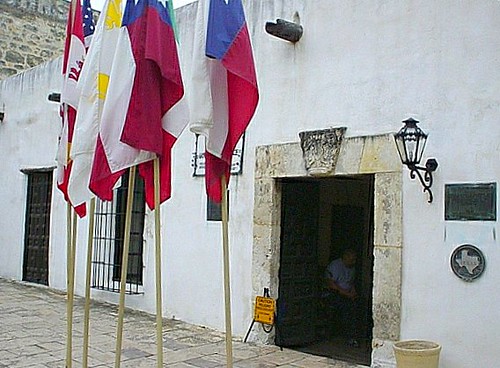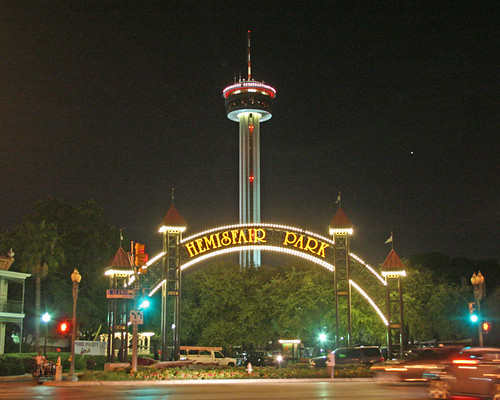
Personal, warm, original, different. This defines the inhabitants of San Antonio to their city. Not for nothing, often say with pride that San Antonio is along with New Orleans, San Francisco and Boston one of only four cities that can not be compared with any other U.S..
The statement does not seem wrong, and probably be part of that great personality to its historical mark, the mixing of cultures and traditions, including Latin roots stand out from the southern-mark over two thirds of the population is Mexican origin, and the provincial air that is evident in its inhabitants.
In searching for such traces of the past appear, unchallenged, the enduring symbol of Texan history: The Alamo. Originally conceived as Mission San Antonio de Valero, hence the name of the town was renamed by the Hispano-Mexican soldiers from the region of Alamo de Parras in Coahuila, Mexico, which in the late eighteenth century were sent here as support detachment during the war of Mexican independence and gave him that name for its similarity to the church in his hometown.
Mission San Jose:
It can also be part of that last poll on the outskirts of the city, in the Missions National Historical Park San Antonio. There are preserved in perfect condition, which were the four main missions in the region: Concepcion, San Juan Capistrano, San Francisco de la Espada and San Jose. These were founded in the early 1700s by the Salesian Order, Franciscans and Jesuits, and the journey it is possible intimate knowledge of the peculiarities of these establishments, very similar in design, operation and administration to be established in our country. Characterized by the sobriety and simplicity in construction recreates daily life, and the relationship between indigenous people and the priests.

Returning to downtown San Antonio, the Spanish Governor’s Palace is a typical Hispanic-colonial construction of the eighteenth century, which was rated by the National Geographic Society as the most beautiful building in all of San Antonio. As if it were built yesterday, surprising from the entrance with a carved door that is a true work of art in itself and has a huge garden with a well typically Creole.
To the south is La Villa, which was the first district of the city in which they settled villagers came from all regions of the state. Today is the site chosen by the young artists, its quiet streets and breathe the air of bohemia. So its quaint buildings were converted into art galleries, clothing stores copyright, design studios and craft shops along with restaurants and bars.
Close by, the Market Square has a pin and craft fair is the place to enjoy local cuisine style.
Almost on the outskirts of the city, in the King William neighborhood you can find the roots of heavy German immigration, which reached the region in mid-nineteenth century. This district, which used to be the most elegant of the city, retains much of the mansions built by wealthy merchants Germans and today is one of the most exclusive residential areas of the city. Getting lost in its streets is a pleasure, as it allows to discover great scenic beauty, for instance, old bridges across the river in several sections.
At King William and the riverside is the Guenther House, a building of 1860, typically German, built next to it was the first flour mill in the state, the Pioneer Flour Mills, and was completely renovated and transformed into small museum , tea house and restaurant.

Tower of the Americas:
But not everything is history, San Antonio also proudly displays its present in that other emblem of the city that is the River Walk. Tracing along the San Antonio River, the ride began to be developed shortly before the World’s Fair, which was made here in 1968 to celebrate the 250th anniversary of the founding of the city, as a way to change the face of that area I was pretty deteriorated downtown, operated as backyard buildings. For that was convened to those who had property on the banks of the river to work together with local government in the restoration of facades, cleaning of the funds and the recovery of degraded areas.
The plan resulted in an attractive promenade, which now totals more than five kilometers in areas interspersed gastronomic and shopping malls with other rest and recreation, while tourist boats traverse the river and back dozens of times per day. And it is estimated that the route will be extended to new residential areas in addition to the city to form a cordon of nearly 17 miles in the coming years.
Also this day is the Tower of the Americas. With 228 meters high, was an emblem of the World’s Fair ’68 and eventually became a postal forced San Antonio. From the top you have the best view of the city and its surroundings, and right there operate a revolving restaurant and a 4 D theater, which presents the sensory The Skies Over Texas, a journey in four dimensions by the state.

Useful facts:
The visit to the Alamo demand about two hours and can be accessed on foot from downtown San Antonio. Admission is free. The missions of San Jose, San Juan Capistrano, Concepcion and San Francisco are more remote and should take a tour to visit them. (No charge admission). The entrance to the National Museum of the Pacific War has cost U.S. $ 7 per person and can be covered in around two hours.
Bon voyage friends!
Leave a Reply
You must be logged in to post a comment.
Recent Comments